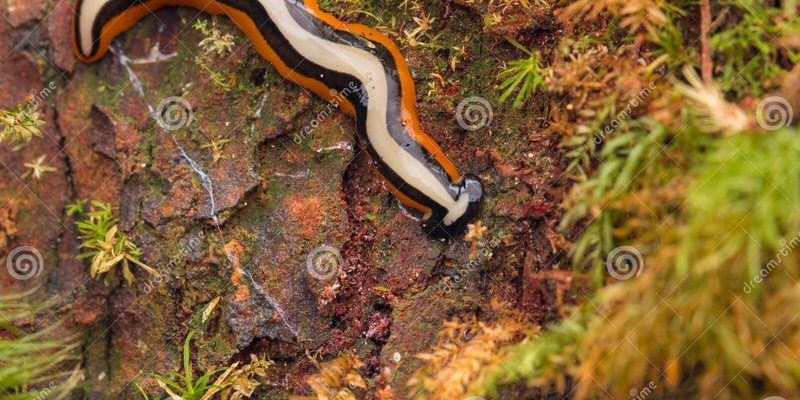
Typically found in tropical and subtropical regions, hammerhead worms are fascinating, albeit a bit creepy, creatures that can grow several inches long. With that distinctive hammer-like head, they’re not hard to identify. But as the day warms up, where do these little guys scuttle off to? Let’s dive into their behavior and uncover where they seek refuge from the sun.
Understanding Hammerhead Worms
Hammerhead worms, or *Bipalium*, are a type of flatworm known for their unique shape and predatory nature. These worms are not your typical garden dwellers; they can actually hunt down other small creatures, including earthworms. While most worms are generally harmless to humans, hammerhead worms do possess a toxin that they use to immobilize their prey.
You might be wondering why they’re called hammerhead worms. The name comes from the shape of their head, which is flattened and broad like a hammer. This characteristic not only makes them easily identifiable but also serves as a pretty cool conversation starter! When you think about these worms, it’s a blend of beauty and a bit of danger — they’re intriguing but can also be quite fierce in their own right.
Natural Habitat of Hammerhead Worms
Hammerhead worms prefer warm and humid environments, which is why you’ll find them in gardens, forests, and areas rich in organic matter. They thrive in leaf litter or under logs where moisture is readily available. Think of it like finding a cozy blanket on a chilly day — that’s what these worms seek when they want to hide.
During the day, when temperatures rise and the sun shines bright, hammerhead worms typically retreat to cool, dark places. They often dig into the soil or bury themselves under layers of decaying leaves. This helps them avoid drying out and protects them from predators. Imagine snuggling into a soft, dark corner to escape the hustle and bustle; that’s how they feel when they burrow down into the earth.
Where to Look for Hammerhead Worms
If you’re curious about where exactly to find these elusive creatures during the day, you might want to check certain spots in your yard. Here are some prime hiding spots:
- Leaf litter: Look for piles of fallen leaves. Hammerhead worms love to hide here, where the moisture levels are perfect.
- Under rocks or logs: During the day, they often take shelter underneath natural debris, where it’s dark and cool.
- Moist soil: Digging a little into damp garden soil can reveal them, especially after rainfall.
- Mulch layers: If you use mulch in your garden, check underneath it. Hammerhead worms often find comfort in the dampness it provides.
If you’re out exploring and happen to turn over a log or dig through the soil, keep an eye out for these sly little creatures. Just remember, if you do find one, they’re better off where they feel safe.
The Ideal Conditions for Hammerhead Worms
What might surprise you is how sensitive these worms are to their environment. They thrive in conditions that are not only warm but also highly humid. On hot, dry days, you won’t find them out and about. Instead, they seek refuge in moist environments, hiding from the pesky sun.
Hammerhead worms are also sensitive to pesticides and pollution. If the soil becomes toxic or dry, they may not survive. Maintaining a healthy garden with plenty of organic matter and moisture is key for supporting their population. Think of them as the canaries in the coal mine; if they’re thriving, your garden is likely in good shape.
Behavior Patterns of Hammerhead Worms
During the day, these worms are mostly inactive. They prefer to stay hidden, which is part of their survival strategy. When dusk rolls around, you might see them come out of hiding to hunt for food. They’re nocturnal by nature, which means they feel most comfortable when the sun goes down.
Their movement is quite fascinating. Hammerhead worms glide smoothly over surfaces, often using a mucus layer to help them maneuver. It’s like they’re swimming through the air! If you’ve ever seen one in motion, it can be quite mesmerizing. But be careful! If you disturb their hiding spots during the day, you might catch a glimpse of their dramatic escape.
Why Do Hammerhead Worms Matter?
You might be wondering why all this information is relevant. Well, hammerhead worms play an important role in their ecosystems. By controlling the population of other small invertebrates like earthworms, they help maintain a balance in the soil ecosystem. This balance is crucial for healthy plant growth and nutrient cycling.
However, it’s important to note that if hammerhead worms are introduced to non-native environments, they can become invasive, disrupting local ecosystems. Understanding where these worms hide during the day and how they thrive can give us insight into their role and impact on different environments.
So, the next time you’re in the garden or out for a nature walk, keep an eye out for hammerhead worms. Remember, during the day, they’re likely tucked away in dark, cool spaces, waiting for the perfect moment to come out and hunt under the cover of night. By understanding where they hide and how they operate, you’ll not only appreciate these quirky creatures more but also help protect their habitats. Exploring nature can reveal so much, and every little creature plays a part in the grand scheme of things!

